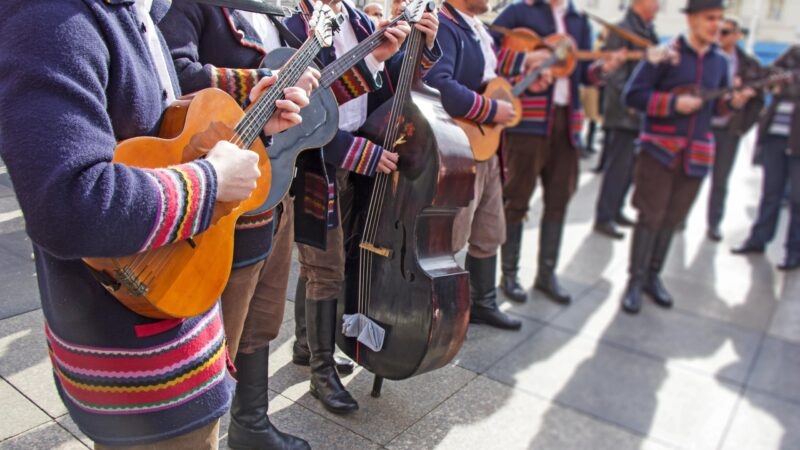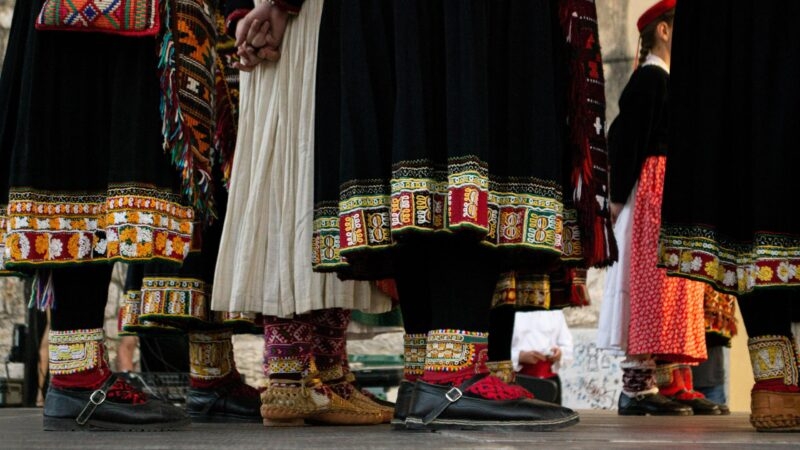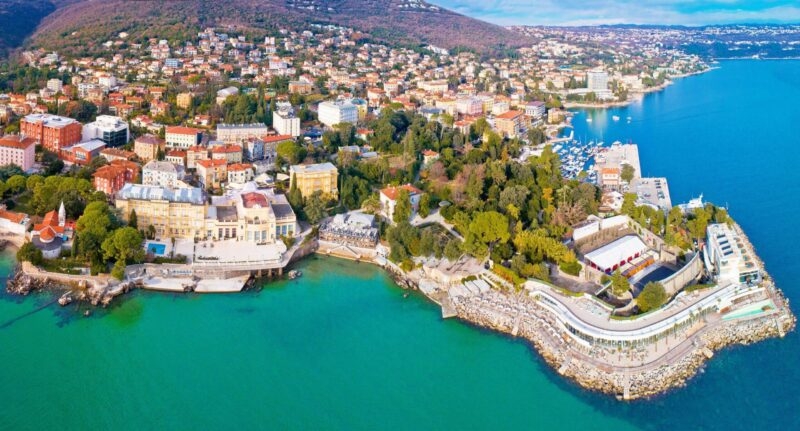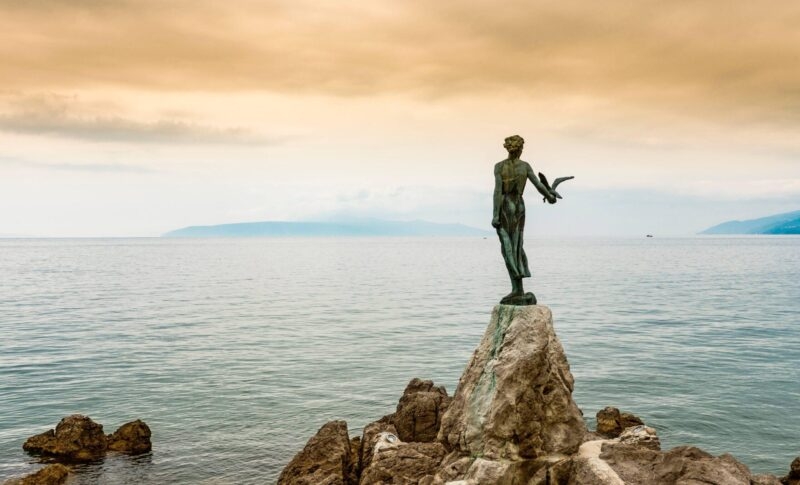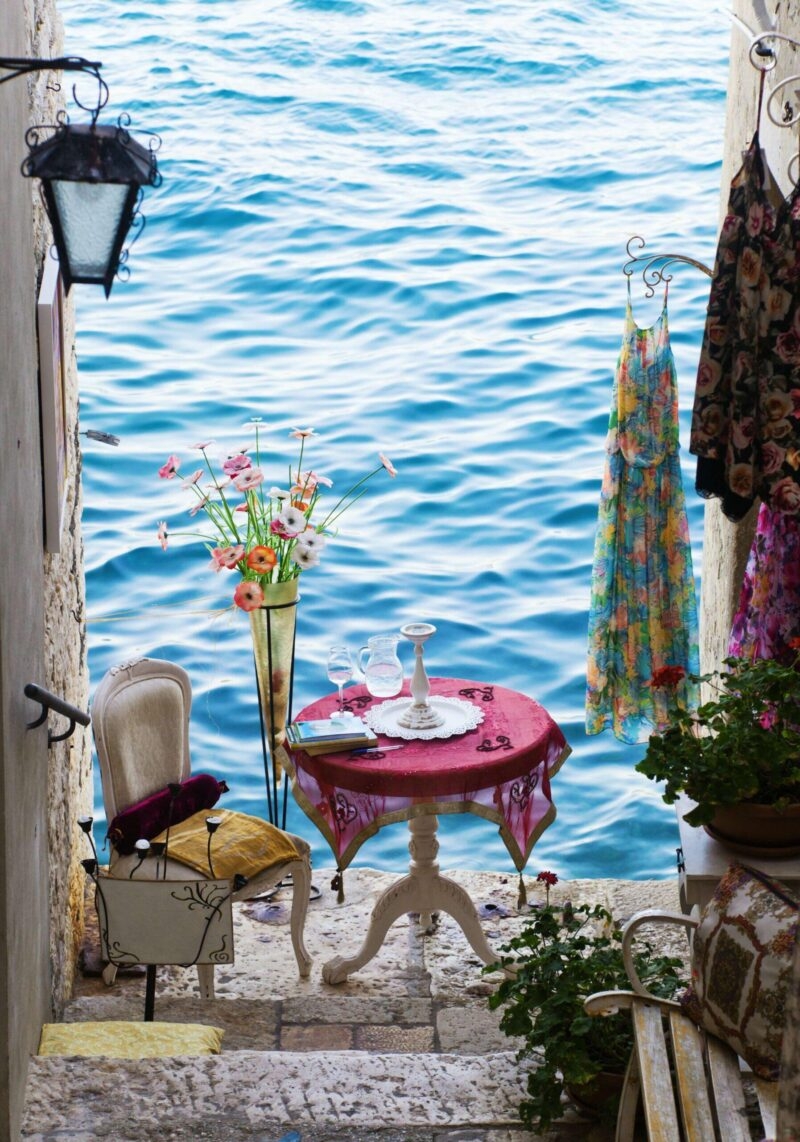Published on: April 29th, 2024
The best time to visit Croatia is from May to June and September to October. These months are the best time to visit Croatia to avoid the crowds and intense heat of the peak season in July and August, but still experience warm, sunny and dry conditions. These shoulder season months are perfect for enjoying beaches, island hopping, sailing, hiking and sightseeing.
Sitting at the crossroads between central and southern Europe, Croatia’s landscapes, culture and history are enthralling and distinctive. The spectacular coastline boasts mediaeval cities, Roman ruins and calm coves, which are perfect for swimming in the Adriatic. There’s also a diverse collection of islands to explore. Inland there’s hilltop towns, rolling olive groves, boutique wineries, stunning lakes, cascading waterfalls and the capital Zagreb, with its gothic architecture.
We’re often asked why timing your visit to Croatia is crucial. The main reason is because Croatia’s weather conditions change pretty dramatically throughout the year, dictated by the country's pronounced seasons. This means your experience in January, a cold winter month with average highs of just 9°C (48.2°F) will be very different to July, a hot summer month where temperatures often exceed 30°C (86°F).
Month by Month Climate Guide
To help you understand Croatia’s climate we’ve compiled a useful month by month weather guide below.
Different locations can experience varying climates at the same time of year and we will explain this below. These differences are often due to geographical factors. For example, southern coastal regions will feel warmer than northern inland regions.
January in Croatia
January is one of the coldest months in Croatia and one that sees some of the heaviest rainfall. On the Dalmation coast, the major cities such as Dubrovnik average around 7°C (44.6°F) during the day and will see some rain nearly everyday. Zagreb will feel very chilly with temperatures dropping to 3°C (37.4°F) and Plitvice Lakes even colder at just 1°C (33.8°F).

February in Croatia
February is another winter month with slightly warmer temperatures than January, although it’s certainly still chilly at around 9°C (48.2°F) on the coast. Towards the end of the month the temperatures can start to climb marginally with a hint of spring on the horizon. You could expect around 11 or 12 days of rain in Split during the month of February, its also the month to visit to witness the annual sailing regatta.

March in Croatia
March will still have the chill of winter, although coastal areas and islands such as Hvar are starting to feel a little milder, exceeding 12°C (53.6°F) by the end of the month. There’s slightly more of a divide in the regional climates in March with inland areas such as Plitvice Lakes and Zagreb feeling quite chilly at around 8°C (46.4°F).
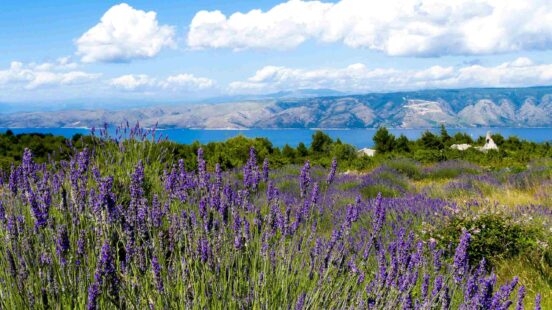
April in Croatia
Although April is the start of spring, it’s still not quite warm enough for beach activities. These cool, yet sunny, conditions can be wonderful for activities and sightseeing, especially if you consider how hot the summer months (June to August) can get. Korčula, Hvar and Split are warming up at around 17°C (62.6°F) and see reduced rainfall, just 61mm in the month.

May in Croatia
May in Croatia is the start of much warmer temperatures and is one of the best months to visit Croatia. Most of the main islands and cities will now feel warm at around 22°C (71.6°F) and rainfall amounts are dropping too. Overall, on the coast expect warm, sunny days without too many crowds – a beautiful time of year.
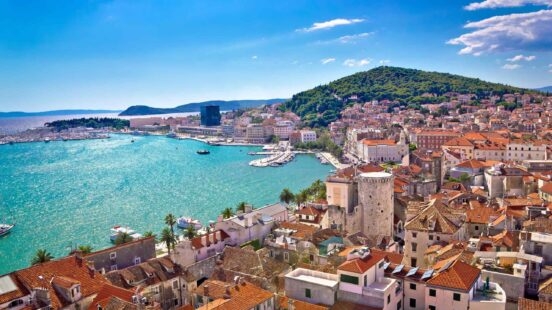
June in Croatia
June is a balmy month in Croatia and there’s a noticeable summer feel in the air. Split, Dubrovnik and Hvar average 25°C (77°F) with the island of Korčula feels even warmer at 26°C (78.8°F). Inland, Plitvice Lakes are also starting to feel warm up with temperatures reaching 21°C (69.8°F). June is another lovely time to travel to Croatia without lots of big crowds in the coastal hubs.

July in Croatia
July is Croatia’s hottest and driest month. It can also be one of the busiest in terms of travel. Locals and visitors flock to the coast to enjoy the refreshing crystal clear waters. It’s this stunning, twinkling coastline that draws so many visitors to the country– and for good reason. Temperatures in excess of 30°C (86°F) can be expected on the coast and Zagreb will be nudging close to those temperatures too.

August in Croatia
August is another hot summer month, very similar to July in terms of temperatures, although it can be ever so slightly cooler at around 28°C (82.4°F). You can visit Plitvice Lakes to cool down in August, as the temperatures inland feel a little more comfortable at around 23°C (73.4°F). At this peak travel time it can feel very busy in the main cities such as Split and Dubrovnik so now is a great time to visit lesser-known spots such as Rovinj.

September in Croatia
September is a beautiful month to travel to Croatia. The heat is less intense, yet still very warm and the conditions are, overall, dry. On the coast the sea breezes start to pick up in September which just adds to the more refreshing feel. The school holiday crowds have dispersed making travel more comfortable.
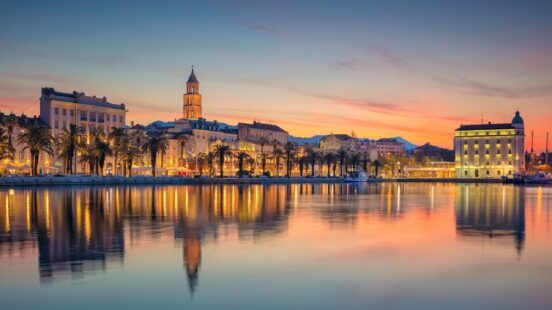
October in Croatia
There’s a noticeable change to the climate in October and it’s a wonderful time to visit for city and cultural explorations. Where September was still holding onto the heat, October can start to feel more autumnal in terms of temperatures. Zagreb will average 16°C (60.8°F) and Plitvice Lakes drops to 14°C (57.2°F) with stunning red and orange autumn colours in the national park.

November in Croatia
Temperatures drop again in November and the rainfall starts to significantly increase. In some areas such as Dubrovnik and Zagreb this is the wettest month of the year. There’s a wintery feeling in the air but Split, Hvar and Zadar stay mild at around 16°C (60.8°F). Overall, the north, south and inland divide becomes more noticeable in November in terms of temperatures with the south feelling mild and the northern and inland areas feeling colder.
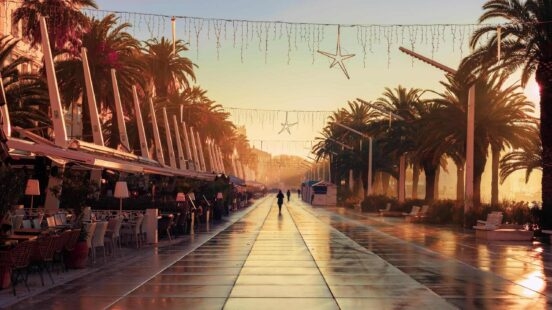
December in Croatia
As the Holidays begin the temperatures drop once again across the whole country. The capital, Zagreb, is cold at 4°C (39.2°F) and the highest temperatures on the coast don’t tend to exceed 11°C (51.8°F). As the month progresses it gets colder and the mountains will start to see snow.

Best Things to Do by Season
Choosing the best time to visit Croatia will depend on the types of activities you’d like to do and the interests you have. Certain times of the year work best for particular activities such as sailing, swimming, hiking or sightseeing. And some months work well if you like to feel a buzzing atmosphere in busy cities, or maybe you’re hoping to escape the crowds.. Or, perhaps you’re travelling with little ones and you need to be cautious of intense heat.
Below we’ll highlight some of our favourite activities in Croatia and explain the best time to visit to enjoy them.
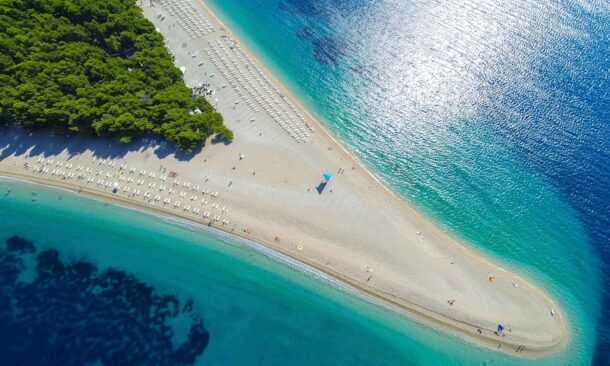
Best time to travel to Croatia’s beaches
The best time to travel to Croatia’s beaches is during the peak summer months of July and August. Summer in Croatia means the sunshine is glorious and the water temperatures can reach a very comfortable 25°C (77°F). It’s important to remember that July and August can get very busy, and hot. To avoid the crowds and peak temperatures June and September can confidently be considered as alternative months to enjoy beach activities.
Croatia’s coastline is dominated by idyllic rocky swimming coves and pebbly beaches, and it’s this geology that makes the waters here so stunning; crystal clear and sparkling. There’s a long list of stunning sandy beaches as well as stone ones. We love the long stretches of sand on the Croatian islands of Hvar and Korčula. The best time to visit Hvar is between June and September, to explore expanses of white sandy beaches and wander the historical highlights in the warm, dry weather.

The best time to visit Croatia’s National Parks
There’s hundreds of protected natural areas in Croatia, displaying the country’s outstanding beauty and natural diversity. By setting out on hikes, bikes, boat trips and scenic tours you can find the cascading waterfalls of Krka National Park, dramatic canyons in Paklenica National Park and sail the 14 stunning islands that make up Brijuni National Park.
The best time to visit Croatia’s national parks is March to June and September and October. During Croatia’s spring, March and April, temperatures are perfect for hikes as it’s not too hot. By early summer, May and June, you can hike in shorts and a t- shirt, enjoying the warmer temperatures. The spectacular burning orange and bright yellows of the autumn (late September and October) leaves make this time of year a truly beautiful time to explore the national parks while temperatures remain warm.
The best time to visit Plitvice National Park, situated further inland than Croatia’s other 5 national parks, is between May and September, when temperatures are at their warmest. It’s cooler here than the coastal areas and even during the peak summer months of July and August, while the Dalmation coast swelters at 30°C (86°F), Plitvice National Park stays closer to 20°C (68°F).
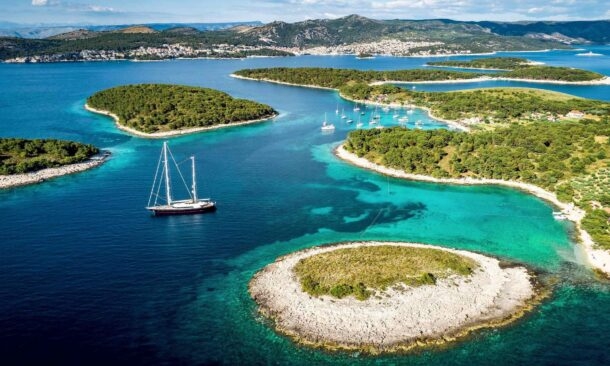
Best time to sail in Croatia
Croatia's waters are peppered with hundreds of islands. Some are remote, rugged and pristine, while others are full of culture with historical towns and pretty ports. These islands, along with the stunning mainland coast, twinkling waters and calm conditions, make Croatia a wonderful place to go sailing and island hopping on private, luxury yachts.
The best time to go sailing in Croatia is the summer season of July and August for optimum, sunny conditions and warm water temperatures – perfect for jumping off the boat and swimming. The waters, islands and coastal hubs will be busy at this time so June can be a lovely alternative month to sail and avoid busy crowds. In September the winds start to pick up for sailing conditions that are a little more exciting.
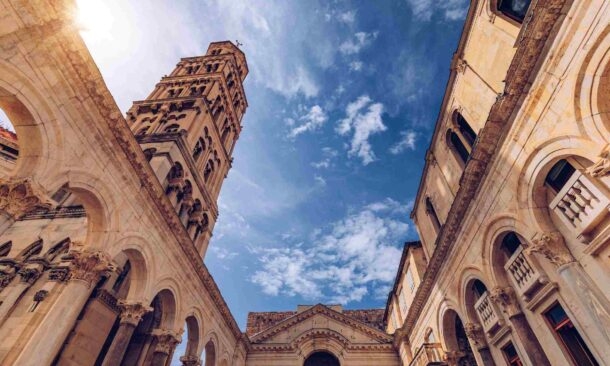
Best time for exploring Croatia's cities and culture
Most of Croatia’s cultural highlights and cities are year round destinations. Having said that, for cities on the Dalmation coast such as Dubrovnik it’s best to avoid the peak summer months of July and August. The best time to visit Split is May to June and September and October, avoiding peak summer. By skipping Croatia’s hot summer months you can avoid the intense heat and also avoid the cruise ship crowds that can make the pretty little city feel rather congested.
Exploring Croatia’s history and culture is an enriching way to get to know the country and its people. There’s no shortage of historic highlights to visit with Roman ruins in Pula and Split, mediaeval architecture in Dubrovnik, and the foodie scene in Zagreb is not to be missed. The best time to visit Zagreb is between June and September, always bearing in mind that July and August will be warmest and busiest. And, the best time to visit Split is May to June and September and October, avoiding the hot and busy summer season of July and August.
Festivals and Cultural Events in Croatia
Croatia’s summer, which runs from June to September, will see most of the country burst into life with many different festivals. Both Split and Dubrovnik celebrate a summer festival with many outdoor venues showcasing the country’s best classical performers with an emphasis on the arts, opera and theatre. In the impossibly pretty town of Varaždin, just north of Zagreb, Špancirfest is a 10 day street festival with workshops and lots of activities for children, along with numerous, delicious street food stalls.
The International Festival of Puppetry Theatres, or PIF, is Croatia’s oldest puppet festival and it takes place in Zagreb at the start of September. The festivities centre around the old puppet theatre in the beautiful old town of Zagreb and it attracts visitors and professional puppeteers from around the globe.
Croatia in Winter
While the winter months in Croatia can be bone-chillingly cold the further inland and north you go, they also make for breath-taking scenery. Stick to the Adriatic coast if you prefer your winters with a more Mediterranean (warmer) feel. In Split and Dubrovnik day time temperatures should stay close to 14°C (57.2°F) but rain showers are possible.
There’s plenty to do in Croatia in the winter too. There’s a sailing Regatta in Split in December and a museum festival that takes place across the country in January, where a selection of Museums stay open late into the night.
Trip Inspiration
Whatever you want from your trip to Croatia, our team of expert travel designers are here to help.





